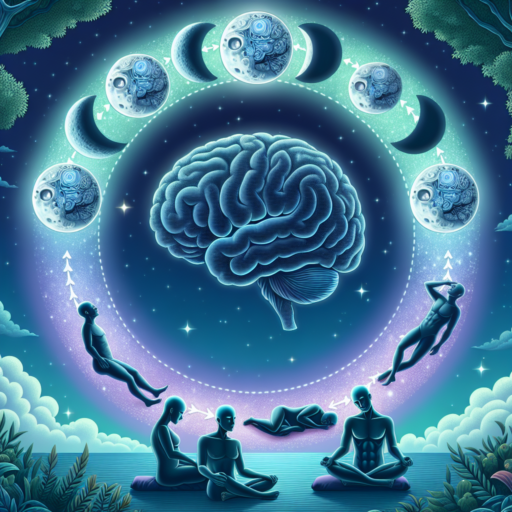Is light sleep considered good sleep?
Understanding the nature of light sleep and its role in the sleep cycle is crucial to addressing the query: Is light sleep considered good sleep? It’s important to know that sleep is typically categorized into different stages, ranging from light to deep (REM and non-REM) phases. Each phase plays a unique role in the overall restoration and health of the individual. Light sleep, often regarded as the entry point into the sleep cycle, sets the foundation for deeper sleep stages.
Light sleep serves several critical functions that contribute to our well-being. Although it might seem less restorative compared to deep sleep or REM stages, it plays an indispensable role in cognitive processing, memory consolidation, and transitioning smoothly through the sleep cycle. In the context of overall sleep quality, light sleep is not merely «good» but essential. It prepares the body for the more restorative phases of sleep, ensuring that the cycle progresses efficiently and effectively.
Comparatively, dismissing the value of light sleep or underestimating its importance might lead to misconceptions about sleep health. Viewing light sleep through the lens of its functions reveals its contribution to emotional regulation, learning capabilities, and even physical health maintenance. It is the scaffold upon which the architecture of a healthy sleep pattern is built. Thus, while light sleep might not carry the profound restorative powers of deeper sleep phases, it is undeniably good and necessary for holistic health.
What happens if you only get light sleep?
Experiencing only light sleep can significantly impact both your physical and mental health. Unlike deep sleep or REM (Rapid Eye Movement) sleep, which are crucial for memory consolidation and physical recovery, light sleep is more about transition. However, it plays a role in sleep cycles that should not be underestimated.
The Impact on Cognitive Functions
One of the most noticeable effects of not progressing beyond light sleep stages is on your cognitive functions. Your ability to think clearly, solve problems, and remain focused can be severely compromised. Research shows that light sleep does not provide the restoration your brain needs to process information and refresh its capabilities for the following day. This can lead to a foggy feeling, making it hard to concentrate or remember details.
Physical Health Consequences
Furthermore, the physical repercussions of solely getting light sleep are considerable. Your body repairs tissue, builds bone and muscle, and strengthens the immune system predominantly during deep sleep stages. Thus, missing out on these periods can lead to increased susceptibility to illness, slower healing times, and impaired physical performance. Notably, light sleep fails to offer the intense restorative benefits that deeper sleep cycles provide.
No se han encontrado productos.
What happens during light sleep cycle?
The light sleep cycle, also known as the first and second stages of the non-REM sleep, plays a critical role in our overall sleep quality. During this phase, the body begins to disengage from its surroundings, making it a transitional period from wakefulness to deeper sleep states. Understanding what transpires during this cycle can shed light on how our bodies and minds rejuvenate nightly.
In the initial stage of the light sleep cycle, the body starts to relax with a noticeable decrease in heart rate, breathing rate, and eye movements. This stage is relatively brief, typically lasting several minutes, and serves as a gentle introduction to the sleep process. Despite being a lighter phase of sleep, it is essential for transitioning smoothly into more profound, restorative sleep stages. An interesting aspect of this phase is the ease with which one can be awakened, signaling the body’s natural readiness to respond to external stimuli if necessary.
Progressing into the second stage, there’s a deepening in relaxation, and the body’s biological functions continue to slow. It’s during this stage that sleep spindles and K-complexes occur—brief surges in brain wave activity believed to protect the brain’s sleep state while still allowing it to process external information. Additionally, this stage accounts for the majority of our nightly sleep cycle, evidencing its pivotal role in the sleeping process. Despite being a deeper stage than the first, it is still classified under light sleep due to the relative ease of awakening compared to the subsequent deep sleep and REM stages.
Do we dream in light sleep?
Many people wonder about the nature of dreaming and specifically, whether we dream during light sleep phases. The sleep cycle is divided into several stages, including both REM (Rapid Eye Movement) and NREM (Non-Rapid Eye Movement) sleep. Light sleep encompasses the initial stages of the NREM period, where the brain begins to transition from wakefulness into deeper sleep states.
Studies have shown that while the most vivid and memorable dreams typically occur during REM sleep, dreaming can indeed happen during light sleep stages. These early NREM dreams might not be as intense or narrative-driven as their REM counterparts, but they serve as a testament to the brain’s active engagement even in less deep sleep phases. The role that dreaming during light sleep plays in cognitive processes, such as memory consolidation and emotional regulation, is a fascinating area of ongoing research.
Dreams during light sleep are often overlooked because they might not be as easily recalled or might blend seamlessly with our thoughts as we drift off. However, through the use of sleep laboratory studies and neurological monitoring, evidence has been gathering to underline the presence of dream-like mental activity throughout these lighter stages of sleep. Understanding the patterns and purposes of these dreams remains a key focus for sleep scientists and psychologists, shedding light on the vast, unexplored landscapes of our sleeping minds.




